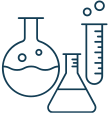The Environmental Health and Safety (EHS) department plays a vital role in ensuring the safety and well-being of employees and the environment in any organization. One of the most important tools that EHS professionals can use to improve their department’s efficiency is data and metrics. By collecting and analyzing data, EHS professionals can gain insights into how their programs are performing, identify areas for improvement, and make data-driven decisions.
In this article, we will discuss how data and metrics can help your EHS department run more efficiently. We will explore some of the key benefits of using data and metrics, the types of data and metrics you should be tracking, and how to use this information to drive continuous improvement.
Benefits of Using Data and Metrics in EHS
There are several benefits to using data and metrics in EHS. First, data and metrics provide a way to measure the effectiveness of EHS programs. By tracking key performance indicators (KPIs), EHS professionals can see how their programs are performing and identify areas for improvement.
Second, data and metrics help EHS professionals identify trends and patterns over time. By analyzing data, EHS professionals can identify potential hazards and take proactive measures to prevent accidents and injuries.
Third, data and metrics help EHS professionals communicate the importance of EHS to others in the organization. By presenting data and metrics, EHS professionals can demonstrate the value of their programs and the impact they have on the organization.
Types of Data and Metrics Salute Helps Track
There are several types of data and metrics that EHS professionals should track to measure the effectiveness of their programs. These include leading indicators, lagging indicators, and process indicators.
Leading indicators are proactive measures that predict future performance. They help EHS professionals identify potential hazards and take preventive measures to avoid accidents and injuries. Examples of leading indicators include:
-
Near-miss reporting: This is a process in which employees report incidents that almost caused an injury or an accident. By tracking near-miss reports, EHS professionals can identify potential hazards and take action to prevent similar incidents from occurring in the future.
-
Safety training: This is a critical component of any EHS program. By tracking the number of employees who receive safety training, EHS professionals can ensure that all employees are adequately trained to work safely.
-
Hazard assessments: This is a process in which EHS professionals identify potential hazards in the workplace. By conducting hazard assessments, EHS professionals can identify potential hazards before they cause accidents or injuries.
Lagging indicators are reactive measures that reflect past performance. They help EHS professionals understand the effectiveness of their programs and identify areas for improvement. Examples of lagging indicators include:
-
Injury and illness rates: This is a measure of the number of injuries and illnesses that occur in the workplace. EHS professionals can identify trends and areas where their programs can be improved by tracking injury and illness rates.
-
Workers’ compensation costs: This is a measure of the cost of providing workers’ compensation benefits to injured employees. By tracking workers’ compensation costs, EHS professionals can identify areas where their programs can be improved to reduce the number of injuries and illnesses.
-
Lost time incident rates: This is a measure of the number of workdays lost due to workplace injuries or illnesses. By tracking lost time incident rates, EHS professionals can identify areas where their programs can be improved to reduce the number of lost workdays.
Process indicators reflect how well EHS processes are functioning. They help EHS professionals identify areas where processes can be improved to increase efficiency and effectiveness. Examples of process indicators include:
-
Inspection completion rates: This is a measure of the percentage of scheduled inspections that are completed on time. By tracking inspection completion rates, EHS professionals can identify areas where their inspection process can be improved to ensure that all inspections are completed on time.
-
Corrective action completion rates: This is a measure of the percentage of corrective actions that are completed on time. By tracking corrective action completion rates, EHS professionals can ensure that all identified hazards are addressed in a timely manner.
-
Audit findings: This is a measure of the number of audit findings that are identified during internal or external audits. By tracking audit findings, EHS professionals can identify areas where their programs can be improved to ensure compliance with regulations and standards.
Using Salute’s Data and Metrics to Drive Continuous Improvement
Collecting data and metrics is only the first step in using this information to improve EHS efficiency. The next step is to analyze the data and identify areas for improvement. Once these areas have been identified, EHS professionals can take action to implement changes that will improve their programs.
There are several ways that EHS professionals can use data and metrics to drive continuous improvement. These include:
-
Conducting root cause analysis: When an incident or accident occurs, EHS professionals should conduct a root cause analysis to determine the underlying causes of the incident. By identifying the root causes, EHS professionals can implement corrective actions that address the underlying issues and prevent similar incidents from occurring in the future.
-
Conducting trend analysis: By analyzing data over time, EHS professionals can identify trends and patterns that may indicate potential hazards or areas for improvement. By identifying these trends, EHS professionals can take proactive measures to prevent accidents and injuries.
-
Implementing corrective actions: Once areas for improvement have been identified, EHS professionals should implement corrective actions to address these issues. This may include revising policies and procedures, providing additional training to employees, or making physical changes to the workplace to eliminate hazards.
-
Communicating results: It is important to communicate the results of data and metrics analysis to others in the organization. By sharing this information, EHS professionals can demonstrate the value of their programs and the impact they have on the organization.
Conclusion
Salute Safety’s data and metrics dashboard contains powerful tools that can help EHS professionals improve the efficiency and effectiveness of their programs. By collecting and analyzing data, EHS professionals can gain insights into how their programs are performing, identify areas for improvement, and make data-driven decisions. There are several types of data and metrics that EHS professionals should track, including leading indicators, lagging indicators, and process indicators. By using this information to drive continuous improvement, EHS professionals can ensure that their programs are effective in protecting the safety and well-being of employees and the environment.

















